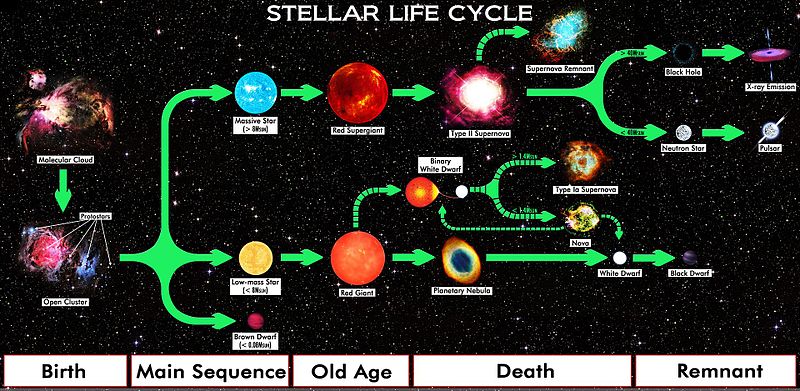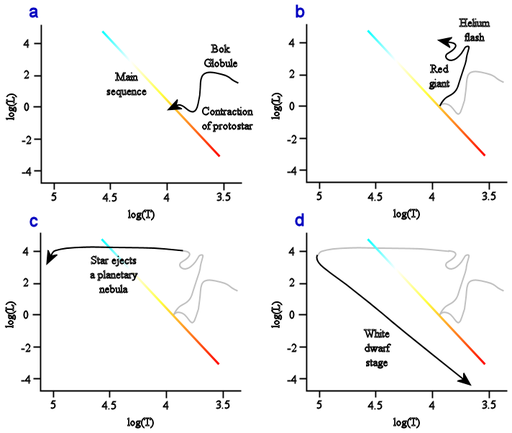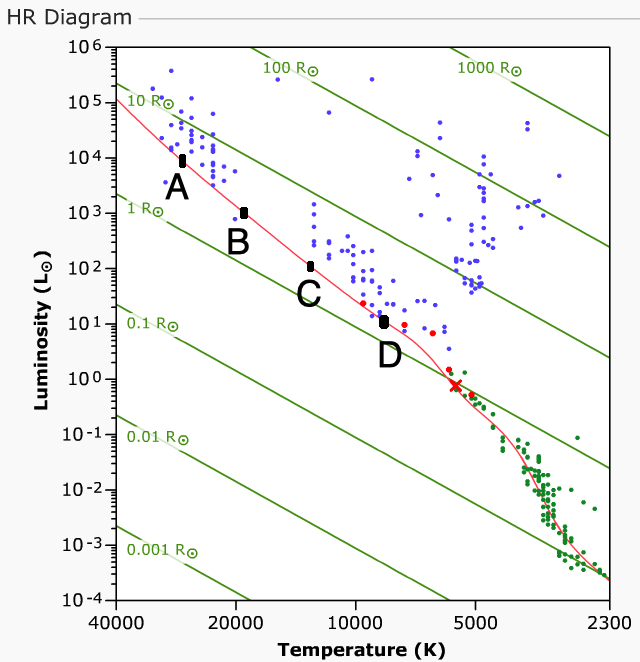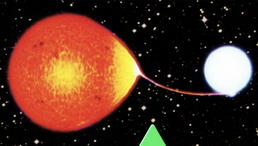 The evolution of a star can be shown on the HR diagram.
The evolution of a star can be shown on the HR diagram.
Key Concepts
This diagram (by R.N. Bailey) shows a summary of the stages in the evolution of a star's life that we have covered so far.
Note the importance of the mass of the star in determining:
- Whether a protostar commences fusion to join the main sequence or becomes a brown dwarf
- The stellar classification of the star during the main sequence
- Whether a supernova results in the formation of a neutron star or black hole
The changes between the main sequence, giant / super giant and white dwarf stages can be represented on the HR diagram.
Taking these in turn:
- Shows a star's entry to the main sequence, as its protostar rises in temperature and commences fusion.
- Shows a star's move from the main sequence to the giant stage, with a reduction in temperature due to the increase in radius and an increase in luminosity associated with helium fusion.
- Shows the end of the red giant stage with the shedding of the planetary nebula as the star expands for the last time.
- Shows the cooling of a white dwarf corresponding with its decline in luminosity due to the absence of fusion.

MY PROGRESS
How much of Stellar evolution have you understood?








 Twitter
Twitter  Facebook
Facebook  LinkedIn
LinkedIn